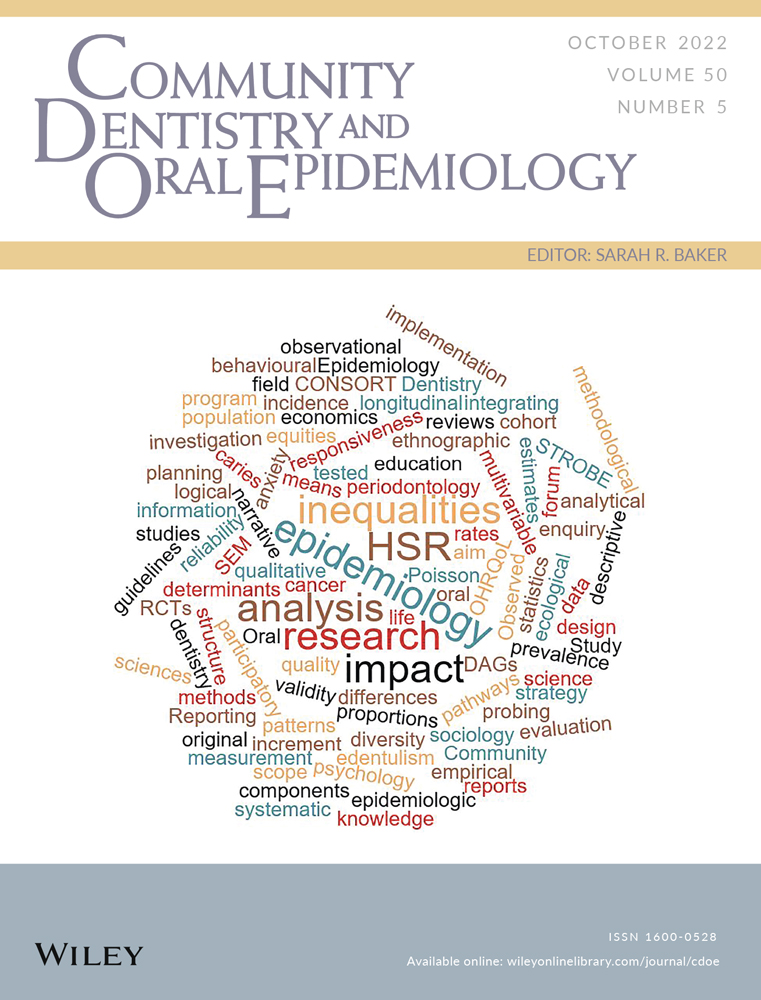Socio-economic inequalities in dental pain in children: A birth cohort study
Abstract
Objective
To describe socio-economic inequalities in dental pain and dental caries in 5 and 12-year-old children enrolled in a birth cohort.
Methods
This prospective study was carried out with children enrolled in a birth cohort in Pelotas, Brazil. The main outcome was history of dental pain in the last six months, collected at 5 and 12 years of age. Dental caries was evaluated as a secondary outcome. Inequalities dimensions were investigated using maternal education and family income. The inequalities indicators used were the slope index of inequality (SII) and the concentration index (CIX).
Results
Some 1,114 and 990 children were included in the analyses at the 5- and 12-year follow-ups, respectively. The prevalence of dental pain was 16.5% (95% CI 14.4-18.8) at 5 years and 31.6% (95% CI 28.7-34.6) at 12 years. Regarding SII, the difference in the prevalence of dental pain was 14 and 11 percentage points at 5 and 12 years, respectively, when comparing the less to the more maternal schooled strata. Relative inequalities (CIX) were found for dental pain only at age 12, considering family income (−5.8 CI95% −11.0; −0.6). Absolute socio-economic inequalities were also observed for dental caries in both ages.
Conclusion
Dental pain in the last six months and dental caries was unequally distributed. Economically disadvantaged groups had the highest prevalence of dental pain and dental caries in both dentitions. Actions to tackle socio-economic inequalities must be designed throughout life.
CONFLICT OF INTEREST
There is no conflict of interest.
Open Research
DATA AVAILABILITY STATEMENT
Research data not shared.




